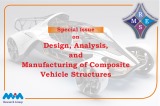Research Article
Estimation of durability properties of self-healing concrete influenced by different bacillus species
Chereddy Sonali Sri Durga1, Chava Venkatesh1, T. Muralidhararao1 , Ramamohana Reddy Bellum2, B. Naga Malleswara Rao1
1Dept. of Civil Eng., CVR College of Engineering, Hyderabad, India
2Dept. of Civil Eng., Aditya Engineering College (Autonomous), India
Keywords
Abstract
Bacteria;
Calcium carbonate;
Cell concentration;
Cracks;
Durability properties
The study was carried out with the influence of four Bacillus species, namely Bacillus subtilis (BS), Bacillus licheniformis (BL), Bacillus halodurans (BH), and Bacillus cereus (BC), in order to improve the impermeable nature of concrete. The selected bacterial agents were cultured according to the nutrient broth medium method and prepared with two variable cell concentrations of 108 and 109. In this study, bacteria were used in two different modes, i.e., as an additive to the concrete and as a curing agent. However, all the concrete specimens were cracked with a 65% stress level concentration and then cured in calcium lactate (only for bacteria-induced concrete specimens) and bacterial solution (only for normal concrete specimens) for crack healing. The durability behavior of these concrete specimens was monitored before crack, after crack, and after healing. In this regard, the following durability tests were performed: Rapid Chloride Permeability Test (RCPT), Water absorption test, Open porosity test, and Acid attack test. From the experimental observations, a decline in the passage of coulombs by 1352 C, water absorption by 3.47%, open porosity by 4.61%, and increased resistance against acid attack was found in normal concrete specimens cured under bacterial solution (especially in Bacillus halodurans with cell concentrations of 109) compared to other ones. Based on the analysis of the results, bacterial cultures have enriched the durability of the concrete by filling the voids and cracks with calcite crystals. However, Bacillus halodurans has shown better durability performance in both types of concrete, i.e., bacterial concrete cured in calcium lactate and normal concrete cured in bacterial solutions.
© 2023 MIM Research Group. All rights reserved.


